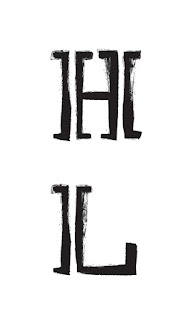Extended practice has allowed me to enjoy graphic design again because I’ve been able to write my own briefs and be more selective in the live briefs I answer. That said, retrospectively I’d question how useful some of the briefs have been in terms of developing a specialised practice. For example, briefs 6 and 8 have little relation to where I intend to go with my practice, and I wish I’d done more briefs based around sport.
In my opinion by far the most successful brief in my submission is brief 7, which was undertaken around the time I’d planned my progression after university. The strength of this brief and the enjoyment I found in it (and to a lesser extend brief 9) really helped reassure me that it was plausible for me to progress into a design role within the sports industry. More briefs like these would’ve given me a stronger portfolio in the context of my niche within the sports industry, so I’ll continue to work on briefs like these in my own time after finishing uni to strengthen my portfolio and aid my progression.
During COP3 I struggled to apply the Nietzschean principles practically, and this was a problem I found occurred again in brief 4 - this confirmed to me that it’s more important for design to be functional (something I try and make all my work) rather than to make it easily identified by an umbrella term such as modernist or postmodernist for example. This confirmation made me less self-conscious about my work because I knew that my research generally had a heavy influence on my outcomes so I could be sure they were functional. For example, looking through Square.One’s portfolio of school logos and going to the National Football Museum influenced the development of the final outcomes, which made the final visual quality for those briefs strong as the decisions were informed.
This module has seen me work on a vast range of briefs and, while this waters down the concentration of important briefs for my portfolio, it’s also given me a lot of experience working with different types of people (illustrators, textile designers, professional designers, and a band) which proves that despite having a niche I can be versatile with my work. This versatility is shown best in brief 3 where I’ve worked on product development as much as on graphic design. On top of this it’s also given me a much wider experience of communicating with different people on briefs, which can only benefit me.
In summary, extended practice has benefitted my work because it’s shown me a clear area of strength within my work (being work where I’m the target audience), which has in turn benefitted my confidence and sense of direction for my progression beyond university. I also feel like I’ve gained something from every brief I’ve done, be it something I can talk about in an interview as an example of a quality I possess, be it providing me more experience communicating with different people, or be it benefitting my portfolio. In this sense I feel like I’ve been successful in extended practice.























































